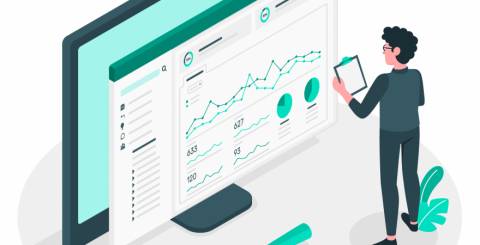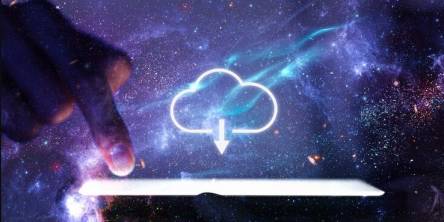Power BI Vs. Tableau: Which Tool is Right for Your Business?

In today's data-driven world, organizations constantly seek ways to visualize and analyze their data to make informed decisions. Two popular tools in the business intelligence (BI) space are Microsoft's Power BI and Tableau. Both of these tools offer powerful features for data visualization, data modeling, and data analysis. In this blog, I’ll explore the key differences between Power BI & Tableau and help you determine which tool may best fit your organization.
Before jumping to the comparison of Power BI vs. Tableau, let’s first briefly look at the two most popular tools.
What is Power BI?
Developed by Microsoft, Power BI is a data visualization and business intelligence software. Its features include:
- Seamless data connectivity from various sources like spreadsheets, databases, big data platforms, cloud services
- Interactive dashboards that can explore data and uncover insights in real-time
- Advanced analytics capabilities like statistical analysis, predictive modeling, natural language processing
- Easy collaboration and sharing of insights within the company or with external stakeholders
- Customization and smooth integration with other business applications and tools
What is Tableau?
Tableau, now a SalesForce solution, is a business intelligence and data visualization software. Its features include:
- Data connectivity across many sources, including spreadsheets, databases, cloud services, and big data platforms
- Drag-and-drop interface helps users quickly create charts, graphs, and other visualizations without complex coding or scripting
- Interactive dashboards enable users to explore data and uncover insights in real-time
- Advanced analytics capabilities like geographic mapping, predictive modeling & statistical analysis
- Collaboration and sharing of insights within the company or with external stakeholders
Power BI vs. Tableau Comparison
Both are potent data visualization tools that offer a range of features for data analysis and visualization. However, some critical differences between Power BI and Tableau may make one a better fit for your organization's needs.
- Data Sources: Both Power BI and Tableau offer a range of data source connectors, allowing users to connect to various data sources such as Excel, SQL Server, Oracle, and others. However, Power BI has a more robust integration with Microsoft products such as Excel, Azure, and Dynamics 365. In contrast, Tableau has more robust integration with cloud-based data sources like Google Analytics and Salesforce.
- Ease of Use: Power BI has a simple and intuitive interface, making it easy for users with little to no technical background to create visualizations and reports. Tableau also has an easy-to-use interface, but it can be more complex than Power BI, requiring some technical expertise to utilize its features thoroughly.
- Customization: Tableau offers more customization options than Power BI, allowing users to create highly customized visualizations and dashboards. Power BI, while still highly customizable, has more limitations in terms of design and customization.
- Collaboration: Both Power BI and Tableau offer collaboration features. However, Tableau's collaboration features are more robust, allowing for real-time collaboration and easier sharing of dashboards and reports among team members.
- Cost: Power BI is generally more cost-effective than Tableau, especially for small to medium-sized organizations.
- Power BI offers a free version with limited functionality and a pro version for $10/user/month
- Power BI Premium designed for large organizations with complex data needs and starts at $4995/month. It includes dedicated capacity, data modeling, and advanced analytics.
- Tableau, on the other hand, starts at $70/user/month for Tableau Creator, which includes data preparation, visualization, and collaboration tools.
- Tableau Explorer is priced at $42/per user/month. Although this plan includes limited features, it is designed for users who need to explore data & create dashboards based on existing data sources.
- Tableau Viewer is priced at $15/user/month. It includes essential features like viewing and interacting with Tableau dashboards.
Power BI may be a better choice for organizations seeking a more cost-effective, user-friendly, and Microsoft-centric solution. At the same time, Tableau may be a better fit for organizations that need more customization options and robust collaboration features. Tableau suits large enterprises needing a highly customizable tool, whereas Power BI is suitable for small and mid-sized businesses requiring an affordable, user-friendly tool. However, it would help to consult a technology partner before investing in a particular tool.
In conclusion, Tableau and Power BI are data visualization and analysis leaders. You must choose the one depending on your needs, preferences, and budget. Power BI is a more cost-effective option and makes an excellent choice for those already using Microsoft tools. Tableau’s user-friendly interface and robust data visualization capabilities make it a top choice for businesses looking to create visually stunning dashboards. You can consult an experienced technology partner like Rishabh Software to assess your business intelligence and data visualization needs and how each tool can integrate with your existing technology ecosystem. They can help you analyze the key features & services and support you in choosing which tool would best fit your project needs.
Similar Articles
In the vast landscape of cyber threats, one adversary has emerged as a formidable force, disrupting businesses and causing chaos: ransomware. The surge in ransomware attacks has elevated the need for a robust defense strategy.
The prospect of migrating critical systems and data to the public cloud understandably raises concerns. Will valuable assets end up exposed or locked in?
"Tenant to tenant migration" has become a pivotal aspect of organizational evolution. As companies expand, merge, or restructure, seamlessly transferring data between different instances or tenants becomes crucial for maintaining operational continuity.
Healthcare organizations collect and store an immense amount of data. The data is essential for doctors to make informed decisions about patient care. However, the sensitive nature of this data requires healthcare organizations to protect it from unauthorized access and data breaches.
Every firm nowadays is establishing its presence in the digital sector to grow internationally. As many might know in the technological environment, web development is essential for success.
One of the things that distinguish having the CIO position now from having the job in the past, apart from the increasing recognition of the significance of information technology, is the introduction of so-called "big data." We're talking about terabytes or even petabytes of data, as well as all of the problems that come with managing such a large amount of data.
A computer virus is a program that is loaded in a system without the knowledge of the user. This virus is not formed naturally but it is induced by people. After entering your system, it gets attached to another program and as the host starts working, the virus starts functioning.
Looking to buy the gaming chair? You’re standing at the right place. The gaming chair offers an immersive media X-perience as they generally put you closer to the TV and therefore closer to the action.
We all know that World Wide Web applications for various services have gained customers' assurance over the years. Terrabytes of data are packed and shared across websites as people imagine the transactions are securely checked.








d006.jpg)
